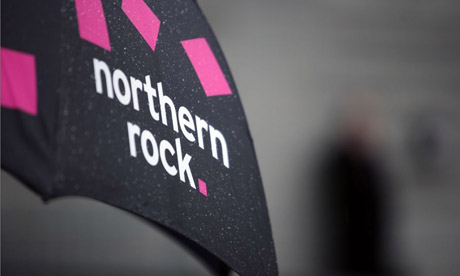Private limited company:
 A limited company is a company in which the liability of the members or subscribers of the company is limited to what they have invested or guaranteed to the company. Limited companies may be limited by shares or by guarantee. The two examples are: New Look Retailers Ltd - The Retail Store Chain, and Warburtons - The Baking Firm. Warburtons is a British baking firm based founded by Thomas Warburton in 1876 in Bolton, then in Lancashire, now in Greater Manchester, England. For much of its history Warburtons only had bakeries in Lancashire and it remains a family-owned company.
A limited company is a company in which the liability of the members or subscribers of the company is limited to what they have invested or guaranteed to the company. Limited companies may be limited by shares or by guarantee. The two examples are: New Look Retailers Ltd - The Retail Store Chain, and Warburtons - The Baking Firm. Warburtons is a British baking firm based founded by Thomas Warburton in 1876 in Bolton, then in Lancashire, now in Greater Manchester, England. For much of its history Warburtons only had bakeries in Lancashire and it remains a family-owned company.Public limited company:
The standard legal designation of a company which has offered shares to the general public and has limited liability. A Public Limited Company's stock can be acquired by anyone and holders are only limited to potentially lose the amount paid for the shares. It is a legal form more commonly used in the U.K. Two or more people are required to form such a company, assuming it has a lawful purpose. Example of public limited company is Northern Rock. Northern Rock plc is a British bank, best known for becoming the first bank in 150 years to suffer a bank run after having had to approach the Bank of England for a loan facility, to replace money market funding, during the credit crisis in 2007.
Public corporatin:
One type is a company whose shares are publicly traded and are usually held by a large number (hundreds or thousands) of shareholders. The usual British term is public limited company and second type is a government owned company such as an airline or public transit company. See also corporation sole. In the United States examples of public corporations are Amtrak and the United States Postal Service.
Amtrak is a government-owned corporation that was organized on May 1, 1971, to provide intercity passenger train service in the United States. "Amtrak" is a portmanteau of the words "America" and "track".It is headquartered at Union Station in Washington, D.C.
 A non-profit organization is an organization that does not issue stock shares or distribute its surplus funds to owners or shareholders, but instead uses the funds to help achieve its goals. Examples of NPOs include charities (i.e., charitable organizations), trade unions, trade associations and public arts organizations. Most governments and government agencies are described by this definition, but in most countries they are considered a separate type of organization and not considered as NPOs. Examples for non-profit organizations are schools, and hospitals if they are own by government.
A non-profit organization is an organization that does not issue stock shares or distribute its surplus funds to owners or shareholders, but instead uses the funds to help achieve its goals. Examples of NPOs include charities (i.e., charitable organizations), trade unions, trade associations and public arts organizations. Most governments and government agencies are described by this definition, but in most countries they are considered a separate type of organization and not considered as NPOs. Examples for non-profit organizations are schools, and hospitals if they are own by government.Non-governmental organization:
NGO is an abbreviation for Non Governmental Organization. It is usually a group that goes into a country and does charity work, without (financial) support of the government--for example Doctors Without Borders. Some examples are The World Peace Society and Global Volunteers. As they say: The World Peace Society of Australia's approach to peace is through non-violence and love.
Pressure group:
 A pressure group can be described as an organised group that does not put up candidates for election, but seeks to influence government policy or legislation. They can also be described as ‘interest groups’, ‘lobby groups’ or ‘protest groups’. Two of pressure groups from UK are People and Planet and Forum for the Future. People & Planet is a network of student campaign groups in the UK. It claims to be "the largest student campaigning organization in the country campaigning to alleviate world poverty, defend human rights and protect the environment."
A pressure group can be described as an organised group that does not put up candidates for election, but seeks to influence government policy or legislation. They can also be described as ‘interest groups’, ‘lobby groups’ or ‘protest groups’. Two of pressure groups from UK are People and Planet and Forum for the Future. People & Planet is a network of student campaign groups in the UK. It claims to be "the largest student campaigning organization in the country campaigning to alleviate world poverty, defend human rights and protect the environment."Social Enterprise:
Social enterprises are businesses driven by a social or environmental purpose. Examples are Kids in the Hall Bistro and ReStore. Kids in the Hall Bistro provides opportunities for at risk youth 16-24 years to learn life and employment skills while operating a food outlet.
Public-private partnership:
Public–private partnership (PPP) describes a government service or private business venture which is funded and operated through a partnership of government and one or more private sector companies. These schemes are sometimes referred to as PPP or P3. Examples are Hudson Bergen Line and JFK Air Train. Air Train JFK is a 3-line, 8.1 miles (13.0 km)-long people mover system and elevated railway in New York City providing service to John F. Kennedy International Airport.





Žiadne komentáre:
Zverejnenie komentára